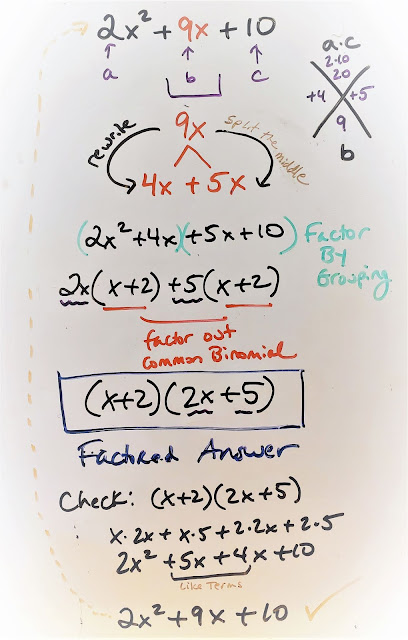Topics for Today:
One method that can be used to solve any quadratic equation is the quadratic formula. The quadratic formula uses the coefficients from the equation to find the values for x when y is zero. It is highly recommended that students MEMORIZE the quadratic formula. The quadratic formula works even when we don't have real solutions (yes, there is such a thing as an imaginary number - stay tuned - you'll become very familiar with imaginary numbers in Algebra II).Vocabulary: quadratic formula
Sections Covered in Textbook:
10-2: Using the Quadratic Formula (pages 547-553)
Resources & Tutorials:
1) What is the quadratic formula?2) How do you solve a quadratic equation using the quadratic formula?
3) Using the Quadratic Formula class notes













